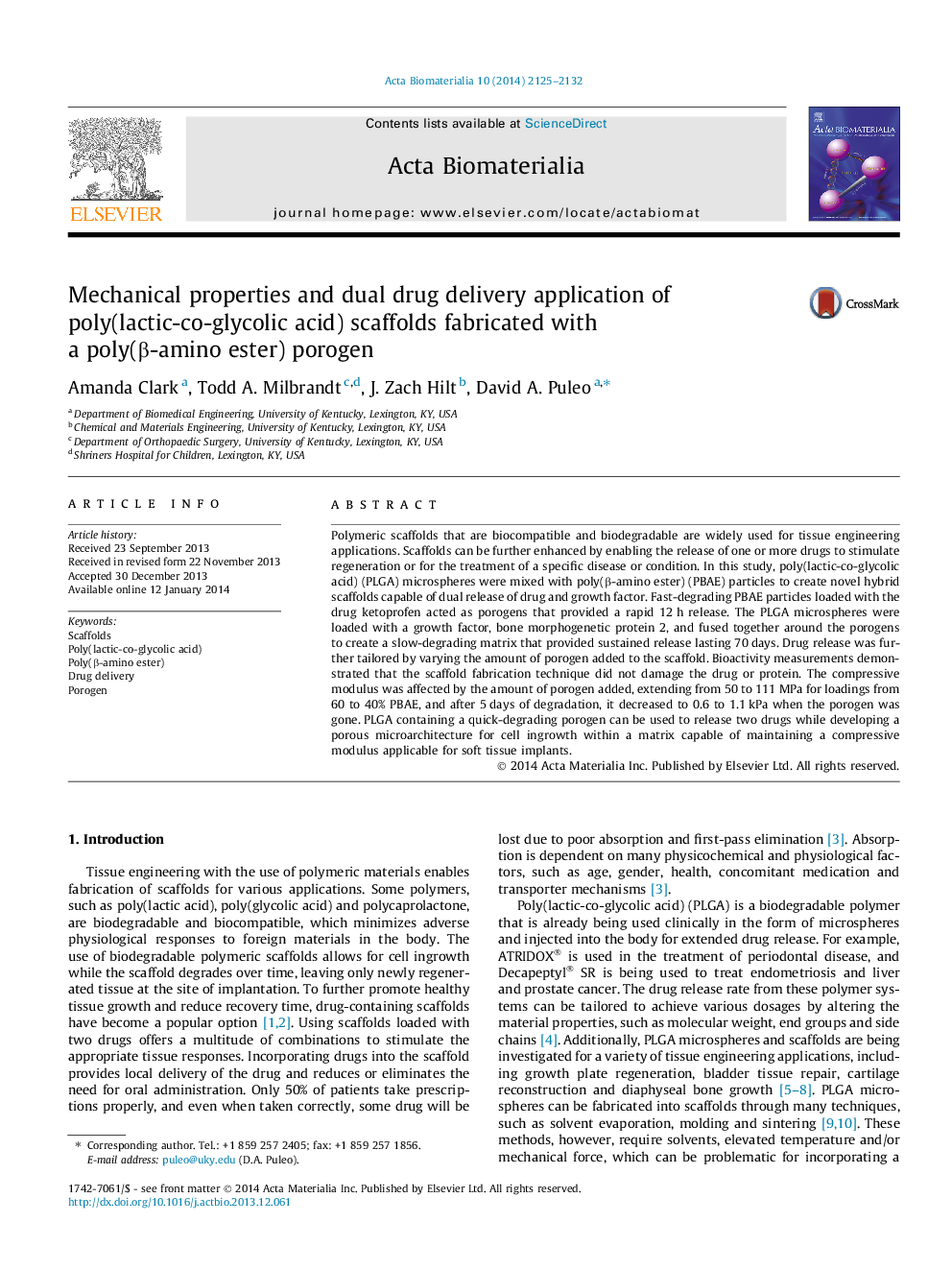| Article ID | Journal | Published Year | Pages | File Type |
|---|---|---|---|---|
| 10159214 | Acta Biomaterialia | 2014 | 8 Pages |
Abstract
Polymeric scaffolds that are biocompatible and biodegradable are widely used for tissue engineering applications. Scaffolds can be further enhanced by enabling the release of one or more drugs to stimulate regeneration or for the treatment of a specific disease or condition. In this study, poly(lactic-co-glycolic acid) (PLGA) microspheres were mixed with poly(β-amino ester) (PBAE) particles to create novel hybrid scaffolds capable of dual release of drug and growth factor. Fast-degrading PBAE particles loaded with the drug ketoprofen acted as porogens that provided a rapid 12 h release. The PLGA microspheres were loaded with a growth factor, bone morphogenetic protein 2, and fused together around the porogens to create a slow-degrading matrix that provided sustained release lasting 70 days. Drug release was further tailored by varying the amount of porogen added to the scaffold. Bioactivity measurements demonstrated that the scaffold fabrication technique did not damage the drug or protein. The compressive modulus was affected by the amount of porogen added, extending from 50 to 111 MPa for loadings from 60 to 40% PBAE, and after 5 days of degradation, it decreased to 0.6 to 1.1 kPa when the porogen was gone. PLGA containing a quick-degrading porogen can be used to release two drugs while developing a porous microarchitecture for cell ingrowth with in a matrix capable of maintaining a compressive modulus applicable for soft tissue implants.
Related Topics
Physical Sciences and Engineering
Chemical Engineering
Bioengineering
Authors
Amanda Clark, Todd A. Milbrandt, J. Zach Hilt, David A. Puleo,
